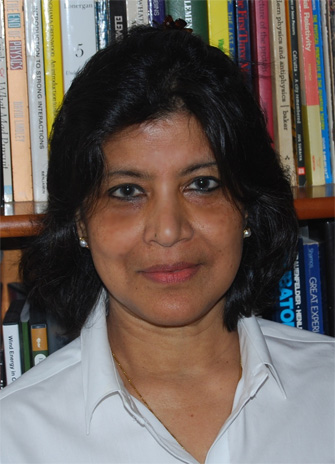The J-PARC Neutrino Beam Group, which includes Canadian T2K (Tokai To Kamioka) collaborators from York University, has been honoured with a prestigious 2013 Suwa Award in recognition of their contribution to the development of high-energy accelerator science. The Suwa Award is given by the Foundation for High-Energy Accelerator Science in memory of Shigeki Suwa, the first Director General of Japan’s National Laboratory for High Energy Physics (now KEK).

York University physics Professor Sampa Bhadra and her group, in collaboration with Canadian researchers from TRIUMF and the University of Toronto, have played an integral part of the J-PARC Neutrino Beam Group since the project’s outset. They provided the Optical Transition Radiation (OTR) detector, which monitors the proton beam that produces the neutrino beam after hitting a carbon target. The OTR group not only designed and built this critical monitor but also took a leadership role in the analysis of the properties of the neutrino beam which was an essential component to the recently published results.
York University is a full member of TRIUMF, Canada’s national laboratory for particle and nuclear physics. TRIUMF has made important contributions to the J-PARC beamline, including the remote handling of radioactive components in the beam. The project was not without its challenges, the most significant of which was the 2011 Tohoku earthquake off the Pacific coast of Japan. The collaboration quickly regrouped after the crisis.
“The proton beamline is complex, with many magnets and monitors. We used the OTR to check how much the target and other beam components had shifted and used the OTR to realign the target”, says Bhadra. “We are proud to be a part of the Neutrino Beam Group, and this award highlights the collaborative nature of particle physics experiments, but also collaboration between science and industry.”
The Suwa award, presented recently at a ceremony in Tokyo, was created to recognize researchers, engineers, and research groups who have made long-term and internationally acclaimed achievements in the development of high-energy accelerator science. The J-PARC Neutrino Beam Group was celebrated for their successful production of the world’s highest-intensity neutrino beam, the crucial ingredient used by the T2K experiment in their groundbreaking study of neutrino oscillations – the transformation of one type of neutrinos to another.

The Japan Proton Accelerator Research Complex, called J-PARC, produces the muon neutrino beam in its facility in Tokai, located on Japan’s east coast. The beam is monitored by a nearby detector complex and aimed underground at the Super-Kamiokande detector near the west coast of Japan, 295 km away. Recently the T2K experiment confirmed definite observation of a new type of neutrino oscillation, in which muon neutrinos transform to electron neutrinos. This is a great advancement in the study of neutrinos, nature’s most elusive particles.


